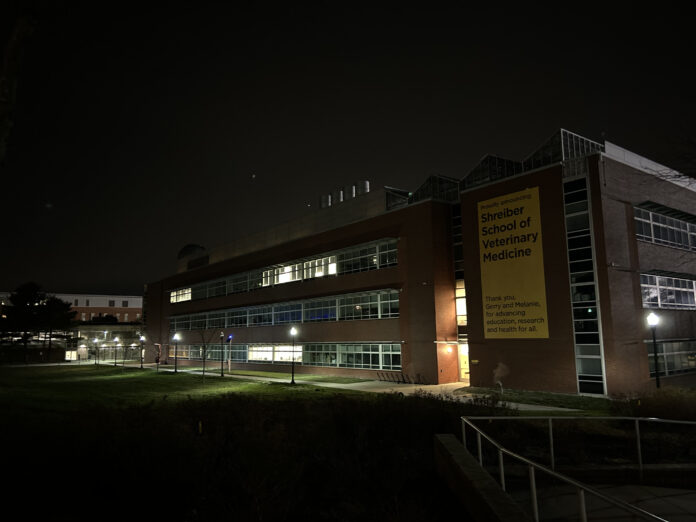
When classes are over and students go home, to finish homework, relax, and head to work, the university is silent. No students walking around, no chatter from friends heading to class, to an event held at Robinson Circle, or pitching their clubs at tables in front of the Chamberlain Student Center. Nights at Rowan are empty, however, if that were true, why would the lights stay on through the night, into the morning?
The assumption that the lights are “left on” without reason throughout the night can be made because if it is 2 a.m. there would be no classes, which means no students. While this is true, lights must be kept on throughout the night for the custodial crew that clocks into their shifts around 11:00 p.m. to conduct cleaning around each building.
“These tasks include wiping down and rearranging classrooms, disinfecting and restocking restrooms, and addressing the needs of the offices and other non-classrooms of the buildings,” said Assistant Vice President of Operation and Plant Management at Rowan, Brian Ewan. “Depending on the size of the building, the number of employees varies per building. Some buildings have one Custodian assigned per floor and some higher-use buildings have a few per floor.”
Lights are also left on at night for security checks to be performed efficiently around each building, which is important, in order to keep the student body and faculty safe.
The lights in some buildings at Rowan are mandated by the fire department to remain illuminated at all times to allow any staff to exit the building safely; often these lights are referred to as “night lights.”
This also depends on the students and staff that turn off the lights when they leave a room, but also automatically if no motion in a room is detected.
“The automatic control systems are usually programmed for well after the last class of the day in the building to ensure the safety of the occupants and to ensure that no one is left alone in the dark,” said Ewan.
He also believes that right now it is impossible to determine how much energy is being consumed electrically for lighting in each building, however, they are continuously working on a project in the future to provide building metering, so they know how much they use in utilities.
According to National Geographic, light pollution has become an alarming concern for the environment, especially as too much artificial light can disrupt human health, wildlife behavior, and the ability to see the stars in the sky.
The rise of renewable energy has been the outcome of light pollution, and for buildings like the ones on campus that need the lights on, it is evident that they could utilize this environmentally friendly energy source.
One of these methods is solar panels that can work at night. A development made by Stanford University found solar panels that use the coldness of space to power the panels. Even though it does not produce the same amount of energy as it would when powered by the sun, it is still useful for the night when energy demands are usually lower.
Associate Professor of Electrical and Computer Engineering, Dr. Jie Li spoke on how the university can incorporate renewable energy to increase energy conversion efficiency.
“We can provide additional energy supply, but we hope this renewable energy will be supplied for the actual use. We do not want to waste that renewable energy as well,” said Dr. Li. “So, Rowan has a lot of open space parking. So these are very good locations for installing these renewable materials because the energy consumption of the university is not great.”
She mentions the idea of using photovoltaic panels. When they are installed, they can convert the thermal energy into electricity, powering the buildings to keep the lights on with renewable energy.
Applying this type of energy to large buildings such as Rowan University, is important to those fighting against climate change. Environmental activists in Rowan Divest, an organization from the environmental branch of the Rowan Progressives, seek to build more hope in climate change progress.
“Renewable energy is crucial for a very simple reason– if our society, and all the institutions that exist within it, want to continue functioning the way they do now, we will not be able to sustain ourselves using non-renewable sources,” said the Rowan Divest Leadership Team in an email statement to The Whit. “Mainly, there are important environmental implications as to why we need to move away from natural gas, but also, the current lifestyle Western cultures tend to enjoy will become logistically unfeasible if we do not transition.”
For comments/questions about this story DM us on Instagram @thewhitatrowan or email thewhit.newseditor@gmail.com





